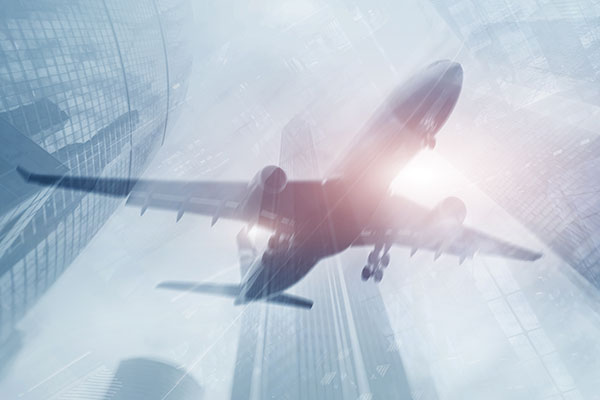It was 30 years ago (July 19, 1989) that the world was fixated on one of the most harrowing crashes in American history. United Flight 232 crash-landed at Sioux City, Iowa’s airport after the aircraft experienced a catastrophic failure of its tail-mounted engine.
Three pilots tried to control the aircraft as it cartwheeled down the runway, landing in a cornfield. The crash left 112 people dead and another 184 injured. Part of it was captured by a person who happened to be taping from the terminal. The event was made into a movie, “Crash Landing: The Rescue of Flight 232” (1992).
The focus of the movie was how the flight crew attempted to handle the emergency and land the plane without conventional control. Captain Alfred C. Haynes, a highly experienced pilot, was in charge of Flight 232, headed from Denver to Chicago on July 19, 1989. When the fan disk on the tail-mounted General Electric engine exploded, debris penetrated the tail in numerous places, including puncturing all three hydraulic systems on the DC-10, which meant that the pilots would not be able to control the plane.
Haynes recruited Dennis Fitch, a pilot who was a passenger on the plane who became another hero of that tragedy when he was asked to take over control of the throttles in the cockpit. He survived the crash but died in 2012 at age 70.
Lawsuits were filed on behalf of many passengers and their families, and through discovery it was learned that safety corners had been cut to rush the GE engine into production as it competed with Rolls Royce making engines for other aircraft. It brings eerie memories of the recent crashes of the Boeing 737 Max8 in the Java Sea and in Ethiopia in the past several months as reports have surfaced that Boeing might have rushed the 737 Max8 into service without thorough testing as it competed against Airbus’ new plane.
“The crashes of the Boeing 737 Max8 demonstrates that the aviation industry really hasn’t come that far,” said Robert A. Clifford, founder and senior partner of Clifford Law Offices in Chicago who represents dozens of victims’ families who were killed in the crash in Ethiopia on March 10 and was co-lead counsel in the crash of Flight 232. “A culture of safety needs to be developed and Boeing is at the center of needing to lead the aviation industry by building planes that are safe and making sure that pilots are educated on each and every type of aircraft it builds. Profits cannot be put before safety.”
In the most recent crashes, it was reported from voice cockpit recordings that, immediately prior to the Lion Air crash last October, the captain was frantically searching the manual of the 737 Max8 for instructions on how to correct the plane’s angle of ascent despite it automatically continually heading nose down. It was later revealed that those instructions were not contained in the flight manual. The plane crashed nine minutes after takeoff in the Java Sea killing all 189 aboard.
And in Ethiopian Flight 302, the aircraft almost immediately exhibited direction and altitude control problems for several minutes before crash landing into a field at more than 500 miles an hour, killing all 157 people aboard. The remaining 737 Max8 aircraft, about 400 planes, were grounded after the second crash while several investigations are being conducted into the problems with the aircraft, including possible software and design flaws, and until authorities around the world are satisfied that the aircraft is safe to fly.
More recently, an aviation hero was recognized, Captain Chesley “Sully” Sullenberger who defied air traffic control orders and in 2009 safely landed a US Airways flight in the Hudson River after a bird strike shortly after taking off from New York’s LaGuardia Airport. All 155 people survived and that, too, was made into a 2016 movie, “Sully,” with Tom Hanks as the captain.
Sullenberger testified in June at a congressional aviation subcommittee hearing in Washington, D.C., on the crashes of the 737 Boeing Max8 aircraft. There he met the parents of Samya Rose Stumo, parents of one of the victims who died in the crash in Ethiopia and who have been vocal about the lack of safety of this aircraft and the Federal Aviation Administration’s (FAA) certification process. Samya is the grandniece of activist Ralph Nader.
The Stumo family, along with dozens of others in that crash, is represented by Robert A. Clifford, internationally acclaimed aviation attorney. He also represented a number of people in the crash of United Flight 232 including Doris Levenberg who survived the crash but later died in 2004 at the age of 79. Levenberg’s case is the only one that went to trial against the defendants including United Airlines, and it took the jury less than two hours to determine a $28.3 million verdict for the then 70-year-old woman. Her husband seated next to her died in that crash.
ROBERT CLIFFORD, WHO HAS REPRESENTED PASSENGERS OR THEIR FAMILIES IN EVERY MAJOR COMMERCIAL AIRLINE CRASH IN THE UNITED STATES IN THE LAST 40 YEARS, IS AVAILABLE TO SPEAK TO THE PRESS ABOUT THE 30-YEAR ANNIVERSARY OF THE NATIONAL TRAGEDY OF UNITED AIRLINES FLIGHT 232 AS WELL AS AIRLINE SAFETY AND ITS CONTINUED IMPORTANCE IN THE LIVES OF EVERY PASSENGER TODAY.
For further information, please contact Clifford Law Offices Communications Partner Pamela Sakowicz Menaker at 847-721-0909 (cell).

